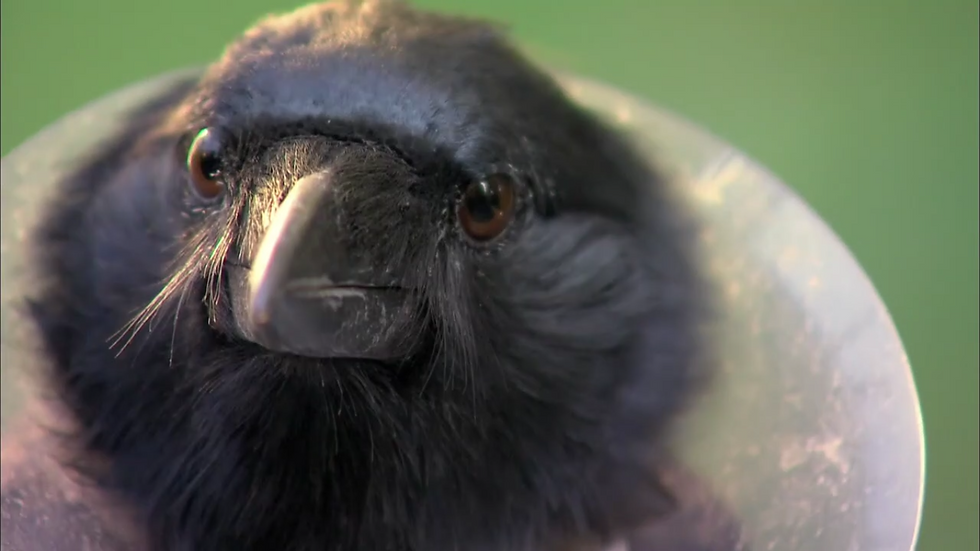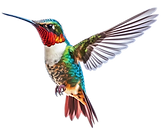"Bird Brain" Blog
- Andrea Torres-Cortes
- Apr 22, 2024
- 3 min read

Weck
Researchers:
Valerie Dufour is a researcher in ethology and cognition. Her area of interest is how animals use social situations to benefit them.
John Marzluff is an author who researches how humans affect crows through urbanization.
Lloyd Buck is a bird trainer. He and his birds have worked in the film industry for commercials and TV series.
Quotes:
“This is Weck. She’s wearing a collar because she recently lost her mate. Crows mate for life and Weck started pulling out her feathers when her partner died” (16:24).
This quote shows one way in which birds may mourn their relationships. I found this interesting as it was the first time I’d heard of this.
“Many scientists believe that forming social relationships within big groups helps drive the intelligence of animals like chimps and dolphins” (28:14).
This quote is engaging as it speaks of two topics covered in the TIME articles, intelligence and relationships and how they can relate to each other
In the documentary “Bird Brain”, I learned some really interesting facts about birds. According to the documentary some bird species “only find enough to eat by being adaptable and that has an impact on their brains” (14:19). Animals are forced to be problem solvers in these situations where food is scarce; therefore, looking for food will cause their brains to be stimulated. To test animals’ abilities to find and get food, researchers have created mechanisms in order to see whether a bird is able to think of a solution outside of its usual habits or not. In the case of a crow named Weck, getting through the human made obstacles wasn’t much of a challenge. Weck was given a box with food inside. The food was able to be reached in four different ways. Weck was able to successfully figure out these four ways and enjoy her snacks. Birds like Weck are one of the few bird species that use tools to acquire their food. This was seen through the research, yet Weck found different ways other than using a stick to reach the food. Despite this, the TIME article about social groups stated that “As important as finding food-and not becoming food yourself-is, nothing shapes animal behavior quite as much as the business of mating and rearing young, and the social rules that get built around this primal task vary hugely from species to species” (Klugger). This means that mating is an even bigger factor that affects animals’ behavior.
This documentary also briefly touched the topic of grief. The same crow, Weck, had recently lost her partner and began pulling her own feathers as a result of that. This can be connected to a statement made in the Friendship TIME article which states that “Animal friendship is about enduring bonds defined by sharing, sacrificing and, when circumstances warrant it, grieving” (Zimmer). John Marzluff, a researcher that made an appearance in the documentary, conducted research on crow funerals. A decoy of a dead crow was placed on the concrete floor and “within just a few minutes, [of the decoy being placed,] the trees are filled with screeching crows” (48:10). This is an incredible example of not only animals mourning, but of their communication. Another human made mechanism was used to test birds’ communication and teamwork skills. This machine required one bird to stand on a platform, causing it to tilt down, ultimately revealing food on the other side which the rest of the birds could enjoy. The birds worked together successfully. They took turns stepping on the platform to ensure that everyone got a bite of the food. Another phenomenal example of communication was presented by Marzluff’s research. This consisted of Marzluff putting on a mask to capture a few crows to place bracelets on them. Everytime the mask would make an appearance around the crows, they would screech and warn their birdmates. This continued on for generations of birds, ultimately showing how crows can communicate information throughout the years.



I love how you highlighted the adaptability of birds in finding food—it's incredible how their brains are stimulated by the challenges they face. Weck's problem-solving skills in the documentary are truly impressive, especially considering her ability to find multiple ways to access food. The discussion on grief among birds is particularly poignant, especially the example of crows mourning their deceased counterparts—it really emphasizes the depth of their social connections and communication skills. Have you considered delving deeper into the topic of bird communication and its role in their social dynamics as part of your research? It seems like there's a lot to explore there!